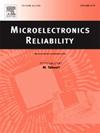Vibration analysis of low temperature BGA and LGA solder joints at elevated test temperatures
IF 1.6
4区 工程技术
Q3 ENGINEERING, ELECTRICAL & ELECTRONIC
引用次数: 0
Abstract
Dummy BGA and LGA components containing the low temperature solder alloy known as B37 from Nihon Superior were subjected to sinusoidal vibration testing at three environmental temperatures in order to evaluate the effect of the temperature condition on the relative reliability of their solder joints. Similar test vehicles constructed with SAC305 solder were also evaluated for general comparative purposes with the understanding that the SAC305 and B37 alloys are intended for different applications and usage environments. Significantly discernable resonance frequencies and accelerations differences were observed with respect to alloy and type of component. This was evident across the different environmental temperature vibration test conditions. The identified differences between the alloys and component types underscore the importance of considering all the factors in the B37 and SAC305 behavior under vibration. While this study successfully highlighted variations in the response of BGAs to LGAs for the B37 versus SAC305 alloys, further research is needed to identify the underlying mechanisms causing these differences, potentially involving more detailed analyses or complementary testing approaches.
求助全文
约1分钟内获得全文
求助全文
来源期刊

Microelectronics Reliability
工程技术-工程:电子与电气
CiteScore
3.30
自引率
12.50%
发文量
342
审稿时长
68 days
期刊介绍:
Microelectronics Reliability, is dedicated to disseminating the latest research results and related information on the reliability of microelectronic devices, circuits and systems, from materials, process and manufacturing, to design, testing and operation. The coverage of the journal includes the following topics: measurement, understanding and analysis; evaluation and prediction; modelling and simulation; methodologies and mitigation. Papers which combine reliability with other important areas of microelectronics engineering, such as design, fabrication, integration, testing, and field operation will also be welcome, and practical papers reporting case studies in the field and specific application domains are particularly encouraged.
Most accepted papers will be published as Research Papers, describing significant advances and completed work. Papers reviewing important developing topics of general interest may be accepted for publication as Review Papers. Urgent communications of a more preliminary nature and short reports on completed practical work of current interest may be considered for publication as Research Notes. All contributions are subject to peer review by leading experts in the field.
 求助内容:
求助内容: 应助结果提醒方式:
应助结果提醒方式:


